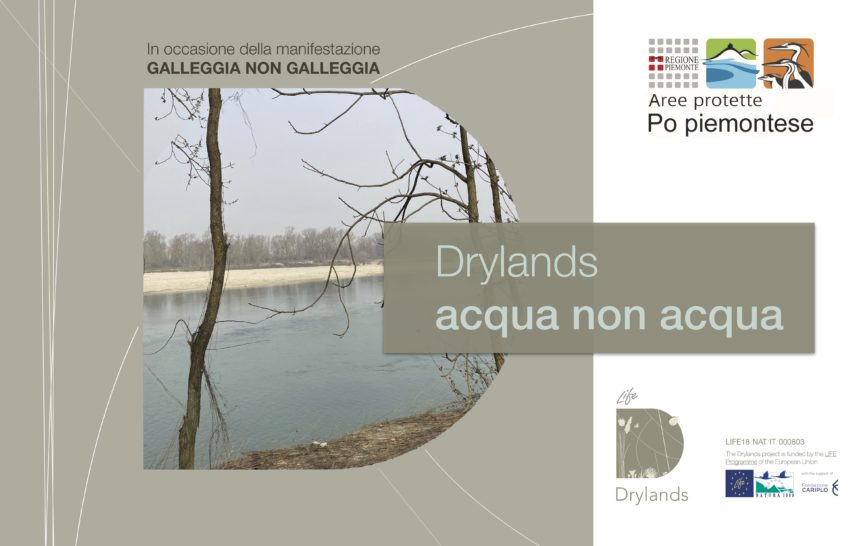July 17th 2022
Imbarcadero Lungo Po – Casale Monferrato (AL)
10 a.m to 16.30 p.m.
We are waiting for you at our information and interactive stand to introduce you to the value of arid habitats and to the restoration actions we are carrying out in the LifeDrylands project.
Download HERE the poster pdf
//////////////////////////////////
Drylands: water or not water? This is the dilemma!
The power of the moor on the day of the public event: ‘Floats does not float’
Only a few of you remember such a dry summer, the rivers are dry and agriculture is in serious difficulty. The heat is unbearable: even the cicadas “complain” starting chirping way before dawn!
But there is someone who appreciates this extreme situation: the arid meadows, the moors, the steppes, the gerbids! Thay are home to delicate flowers, mysterious lichens and butterflies.
These drylands are, despite everything, at risk of extinction, due to the fragmentation of the habitats connected to anthropization. Since the World War II, the prairies on a sandy bottom, as well as the moors and arid prairies, have drastically decreased.
Never like in this historic moment, it is essential to understand how much life on Earth is strongly linked to the well-being of vegetal world, from which the oxygen we breathe and our alimental resources, come from.
Drylands have always been considered of little use for agriculture, abandoned or fragmentated in favor of urbanization: but in reality, they are treasure of biodiversity.
The Life Drylands project proposes the redevelopment or reconstitution ex novo of some arid habitats in areas with great plant potential but very degraded as a less valuable kind of vegetation is taking hold, dominated by invasive alien species such as the late blackthorn (Prunus serotina), the black locust (Robinia pseudoacacia) and Solidago.
However, there are some species that denote the heath character of these green areas, such as Potentilla hirta, Cytisus scoparius, the Broom of the Carbonai, or, in some areas, Calluna vulgaris. While mosses and lichens represent the pioneer phase of the moor.
The arid continental acidophilic habitats under study and restoration by the Drylands project are located within eight Natura 2000 sites, along the Po, Ticino and Sesia rivers.
And it’s precisely on the occasion of an event strongly connected to water, such as ‘Floats does not float’, that the Drylands project team wants to draw attention to these environments.
The project, coordinated by the Department of Earth and Environmental Sciences of the University of Pavia and co-funded by the Cariplo Foundation, involves the Piemontese Po protected areas management body, the Ticino and Lake Maggiore protected areas management body, the Lombard Park of the Ticino Valley, the Network of Botanical Gardens of Lombardy region, and the Department of Biological, Geological and Environmental Sciences of the University of Bologna.[mg1]
Therefore, we are waiting for you at the Casale Monferrato pier among the competitors of the endurance race to tell you about the important role of these habitats, the activity to guarantee their restoration and, why not, the resistance of meadows and moors in a day where water is the protagonist.
The stand will be open on Sunday 17 July from 10:00 to 16:30
Communication service
Piemontese Po Park


